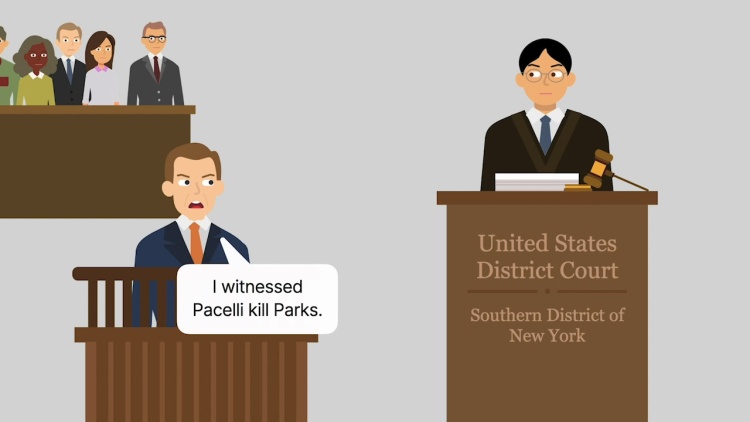United States v. Pacelli
United States Court of Appeals for the Second Circuit
491 F.2d 1108 (1974)

- Written by Christine Raino, JD
Facts
The government (plaintiff) prosecuted Vincent Pacelli, Jr. (defendant) for conspiring to interfere with the constitutional rights of others, specifically alleging that Pacelli killed Patsy Parks to keep her from testifying. Patsy Parks had previously testified to a grand jury investigating drug dealing that a box of money had been delivered to Pacelli. At Pacelli’s trial, the trial court allowed over defense objections, certain testimony of Lipsky, an associate of Pacelli and an eye-witness to the murder. In dispute was Lipsky’s testimony regarding a meeting between some of Pacelli’s friends and family members. Lipsky testified that he was summoned to the meeting where Pacelli’s wife offered him money to induce him to go to Florida. He also testified that the attendees were discussing that the murder had been bungled because the body was so easily found. The government sought to introduce Lipsky’s testimony about the meeting for the implication that people who were close to Pacelli believed he had killed Parks and that the information on which they were acting must have come from Pacelli himself. Pacelli was convicted and appealed the judgment of conviction to the United States Court of Appeals for the Second Circuit. Pacelli claimed that admission of the out-of-court statements in Lipsky’s testimony about the meeting was erroneous because the statements constituted inadmissible hearsay.
Rule of Law
Issue
Holding and Reasoning (Mansfield, J.)
Dissent (Moore, J.)
What to do next…
Here's why 899,000 law students have relied on our case briefs:
- Written by law professors and practitioners, not other law students. 47,000 briefs, keyed to 994 casebooks. Top-notch customer support.
- The right amount of information, includes the facts, issues, rule of law, holding and reasoning, and any concurrences and dissents.
- Access in your classes, works on your mobile and tablet. Massive library of related video lessons and high quality multiple-choice questions.
- Easy to use, uniform format for every case brief. Written in plain English, not in legalese. Our briefs summarize and simplify; they don’t just repeat the court’s language.








